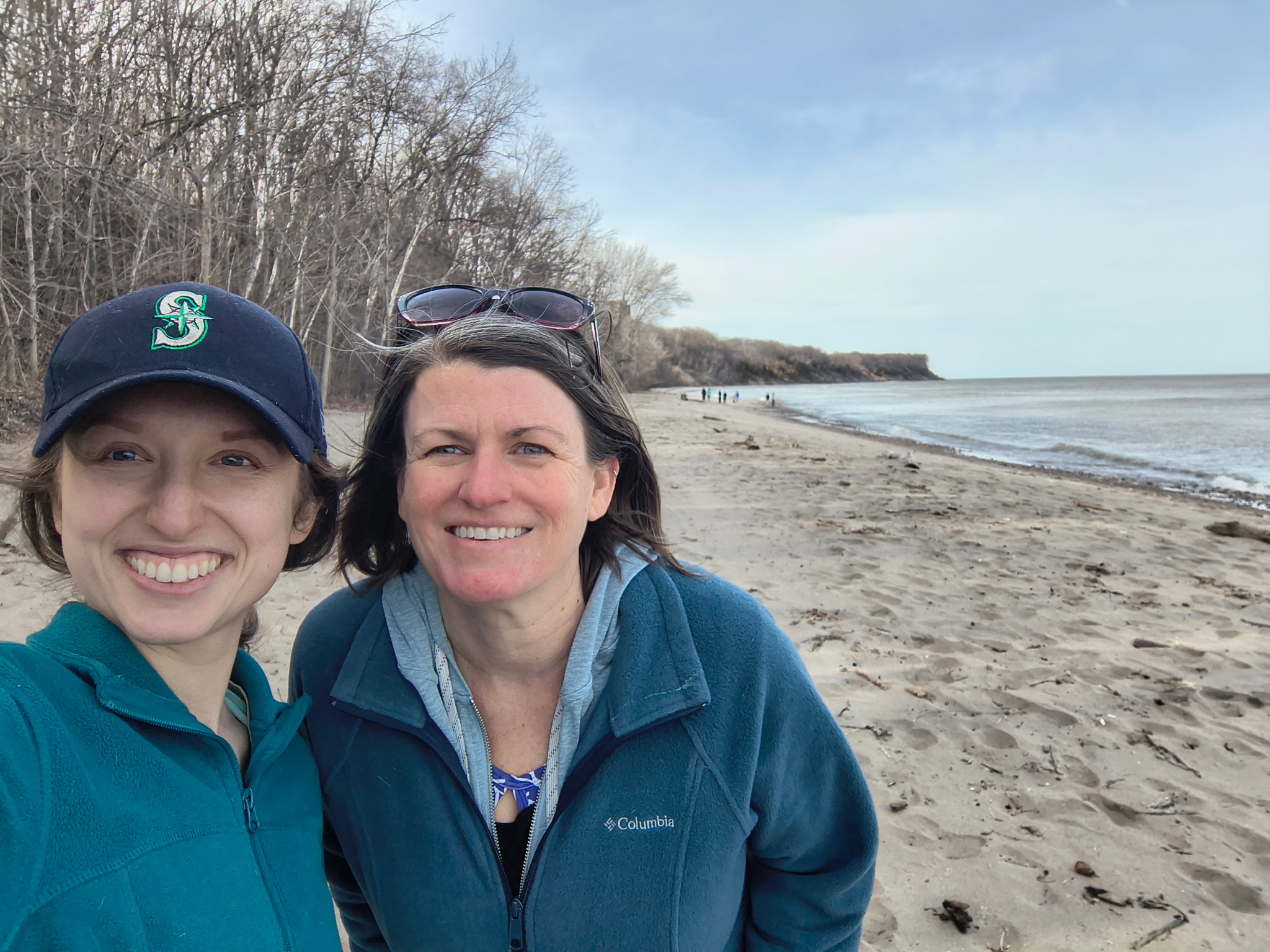In the late 1800s to early 1900s, Midwesterners who needed to travel across the region or wanted to get away from the pollution of the cities had something in common with grain and lumber magnates. To get where they wanted to go, each had to rely on the steamers and tugboats of the Goodrich Transit Company. Goodrich kept regular year-round passenger steamer schedules to Lake Michigan’s coastal communities and was also involved in cross-lake freight transport contracted through the railroads.
Several Goodrich boats ended their maritime careers as shipwrecks, abandoned on the bottom of Lake Michigan. Now, with the support of Wisconsin Sea Grant, Tamara Thomsen and Caitlin Zant, maritime archaeologists with the Wisconsin State Historical Society, are using the Atlanta and the Arctic, a pair of Goodrich wrecks, to chronicle the history of this important shipping company. And, more important, educate a new generation of maritime archaeologists.
“In choosing these ships, we wanted to choose something that was in relatively shallow water, was relatively intact, but not so fully intact that you couldn’t learn something from them,” said Zant.
The project began last summer. Zant and Thomsen helped lead a field school of maritime archaeology students from East Carolina University in a dive survey of the Atlanta, a wooden cargo schooner that sank in a shallow fifteen feet of water eleven miles south of Sheboygan in 1906 after catching fire during its fateful final voyage.
Because the ship was allowed to burn to the waterline, it created a situation in which less-flammable items on the ship fell through the decks.
“You have this amalgamation of different bits and pieces that would otherwise have been found in other places in the ship,” explained Zant.
That amalgamation included everything from rolls of carpet to pieces of the stuffing box, the padded area that connected the Atlanta’s propeller shaft to the boiler mechanism. But what intrigued the dive team most — and doubled as the most historically significant discovery — was the Atlanta’s unique double-steel truss framing.
“When wooden vessels got that big, they had to find ways to make sure the vessel didn’t sag in the middle,” said Thomsen. “The Atlanta has this 200-foot hogging truss that went along the entire interior. It was reinforced when the ship’s stern was rebuilt.”
The dive team battled several obstacles to complete the survey, including foggy weather and boat problems — the boat that the students brought from North Carolina broke its propeller on the first day, necessitating some scrambling.
Their efforts have already paid dividends. In early March, the application to add the Atlanta to the Wisconsin Register of Historic Places was approved; depending on how long the process takes to unwind, it could be added to the national register later this year. Thomsen also created six maritime history-related geocache sites, split between Sheboygan and Port Washington.
Because the Atlanta burned within clear sight of shore, many of the longtime residents of the area — including one local homeowner who had a framed display of newspaper clippings and recovered artifacts from the ship in his living room — were very familiar with its location and the details of its demise. That homeowner allowed the dive team to use his shoreline as an access point to the wreck, one of several instances where the community engaged with Zant and Thomsen’s work.
“This wreck is very alive within the consciousness of the people who live in this area,” Thomsen said. “It hasn’t been removed from their memory at all.”
This summer, Thomsen and Zant will be leading a different breed of dive students through a survey of the Arctic, a tugboat icebreaker that helped keep the waters clear for the Atlanta (and other ships) for nearly 45 years before it was abandoned by Goodrich Transit in 1930. This time, they’ll be working with archaeology hobbyists, divers affiliated with the Wisconsin Underwater Archaeology Association (WUAA) and the Great Lakes Shipwrecks Preservation Society.
“We’re training people to help us do what we do — full-fledged dive surveys — or do their own projects,” said Thomsen. “We want to be sure they have the best tools and skills to record these vessels.”
The Arctic could prove to be an interesting challenge. Maritime archaeologists believe they know the location of the Arctic’s stern, but the fate of its bow has remained a mystery. This summer, a local diver convinced Zant and Thomsen to examine what he believed was the wreck of an old schooner north of Manitowoc.
“We got down there, and my first thought was, this is not anything like any schooner I have ever seen,” said Thomsen. ”This thing was a tank.”
The bow was heavily reinforced, like it was specifically designed for riding up on and breaking ice.
If the wreck is, is fact, the other half of the Arctic, it gives the students the opportunity to do some investigative archaeology, to match the pieces and the framing of the two parts to make a complete picture. The bow of the wreck is turned in a different location than the stern, but that could be the result of storms moving it approximately a quarter-mile up the coast.
Thomsen and Zant won’t bring students out to survey until August, but they’re already excited by what they’re likely to find — and the mystery they may solve in the process.
“This is a step farther than what we normally do with our field school,” said Zant. “The students can collect data from the site and really focus on the detail.”





